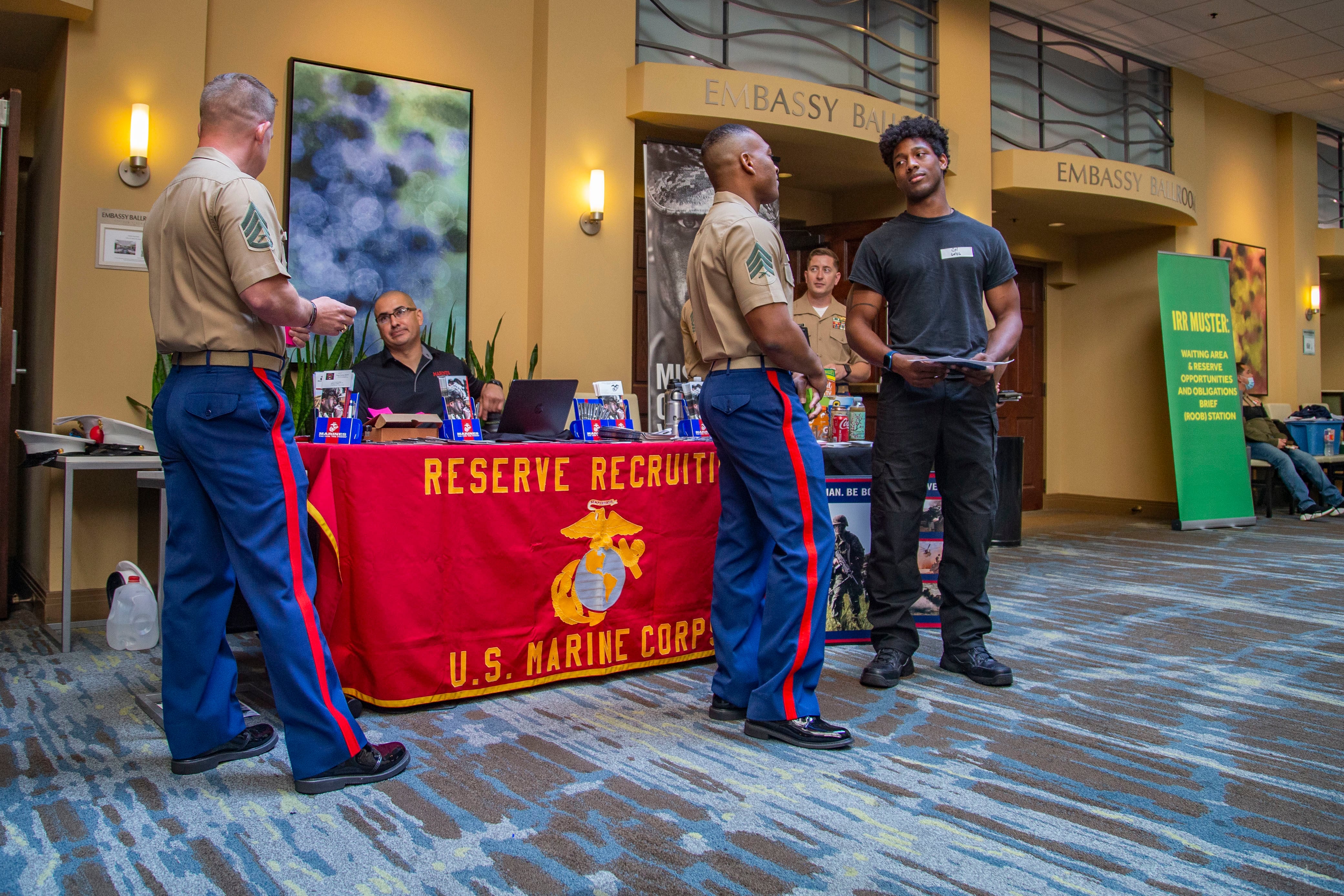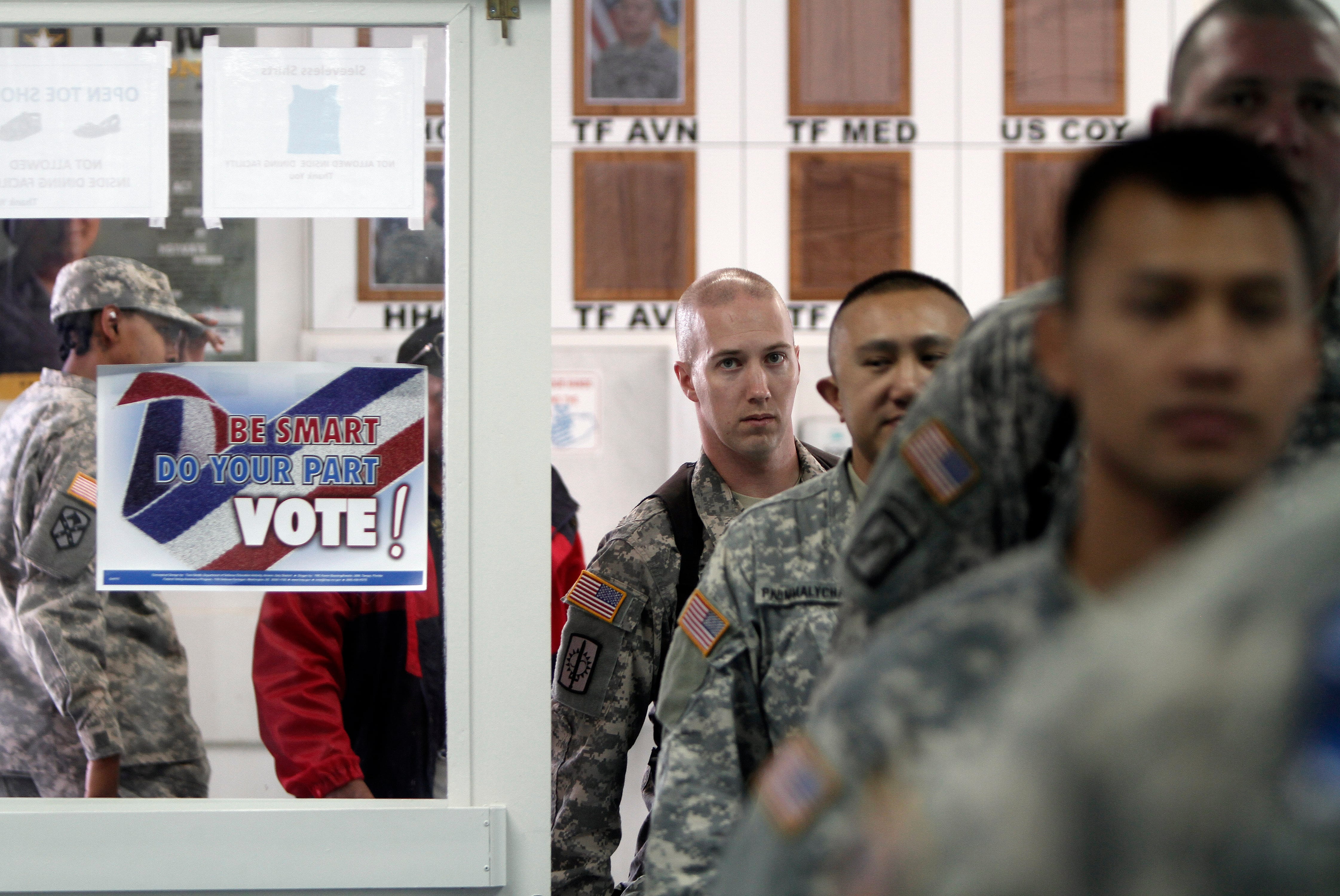Active duty Marine Corps force planners are, perhaps for the first time, looking to the reserve side to take on operational, experimental and capabilities and roles at a level the component hasn’t faced.
For decades, the Marine Corps Reserve was a near-mirror image of its active side counterpart. It was the 4th Marine Division in organization, manning, training and most equipping.
But with the shift called Force Design 2030, launched by Commandant Gen. David Berger and his staff throughout the past three years, the reserves are tailoring its force to do more.
The reserves will supplement the active side where needed and take a starring role in duties such as crisis response in the theaters that are not the Indo-Pacific Command and filling the ranks for Marine Forces South.
RELATED

That’s all part of the Marine Corps Forces Reserve Campaign Plan. The document was released late in 2021 and is the force design equivalent for all things reserve.
Lt. Gen. David Bellon, head of both Marine Forces Reserve and Marine Forces South, told Marine Corps Times in a May interview that a key piece of that work is the reserve partnership with II Marine Expeditionary Force.
“The commandant has ordered the II MEF commander and myself to design a capability set and build a future force that can respond more holistically to global contingencies,” Bellon said.
That means reservists will be on deck for deployments anywhere, but might deploy in units or methods much different than in the past.
“As I MEF and III MEF are now tied to regional issues in the Pacific, this planning team’s work will ensure Marines are quickly on station anywhere else on the planet when needed,” Bellon said in a December 2021 statement.
To meet that need, Bellon and his staff are taking new approaches such as being the sole home for Marine law enforcement units, retaining half of the Corps total rocket artillery capacity and integrating reserve aviation units in with the active-duty Marine Air Wing.

While in the past there has been individual augmentation and even whole reserve units deploying with higher active-duty echelons, those filled gaps in the standard Marine Air-Ground Task Force structure, be it a small special-purpose unit or a Marine Expeditionary Force invading Iraq in 2003, for example.
Previously, Bellon said, there was a “lag response” in changing reserve unit composition for nonstandard deployments.
But the commandant’s tasker and Bellon’s partnership with IIMEF means, “we’re now proactively looking at ways to modify the reserves, in advance.”
That’s a change for both the active side’s use of the reserves and for the reserve planners themselves, who previously saw only force moving not total design change.
Dr. Gerald Ormerod served in the Corps from 1986 to 2008 when he retired as a lieutenant colonel. He’s spent much of his time since helping keep the Marine Forces Reserve in the mix as its deputy assistant chief of staff for capabilities and requirements, G-8.
He now serves in planning for Marine Forces Reserve. The adoption of force design and its novel approach to using the reserves has been a shift.
“Prior plans were force structure reviews, basically moving capabilities around the portfolio,” Ormerod said. Force design applied to the reserve structure, “is almost like a rewrite approach to the named threat, the (People’s Republic of China).”
In the May annual update to Force Design 2030, the reserves get more mentions that before. And specific outcomes and expectations to go along with those mentions.
The report notes that the ongoing force design work has developed options for each of the three MEFs and the reserves. The plan leans on the reserves to improve aviation outcomes and lays out plans for limited experiments to do just that.
Specifically, they plan a “proof of concept” that will integrate 2nd Marine Air Wing with reserve VMM-774 into an active Marine Aircraft Group in fiscal year 2023, according to the report.
Col. Andrew Shriver, Marine Forces Reserve assistant chief of staff for capabilities and requirements, G-8, worked at Combat Development and Integration for two years as the initial force design concepts hit the Corps.
In a recent interview, Shriver told Marine Corps Times that the reserve side is currently validating and refining capabilities that only it has or can provide unencumbered by other operational commitments than the active side does now.
Those include the previously mentioned law enforcement and rocket artillery.
But the reserves also have personnel retrieval and processing, formerly known as mortuary affairs, Marine advisors, aviation command and control and logistics augmentation, airborne capable air naval gunfire liaison company units, also known as ANGLICO.
That means ways that reservists can rise to the top of the choice list for unique capabilities and get on the active deployment cycle more rapidly.
“I think today and looking forward you can speak to a much more diverse set of opportunities that are available to the reserve component,” Shriver said.
Todd South has written about crime, courts, government and the military for multiple publications since 2004 and was named a 2014 Pulitzer finalist for a co-written project on witness intimidation. Todd is a Marine veteran of the Iraq War.




